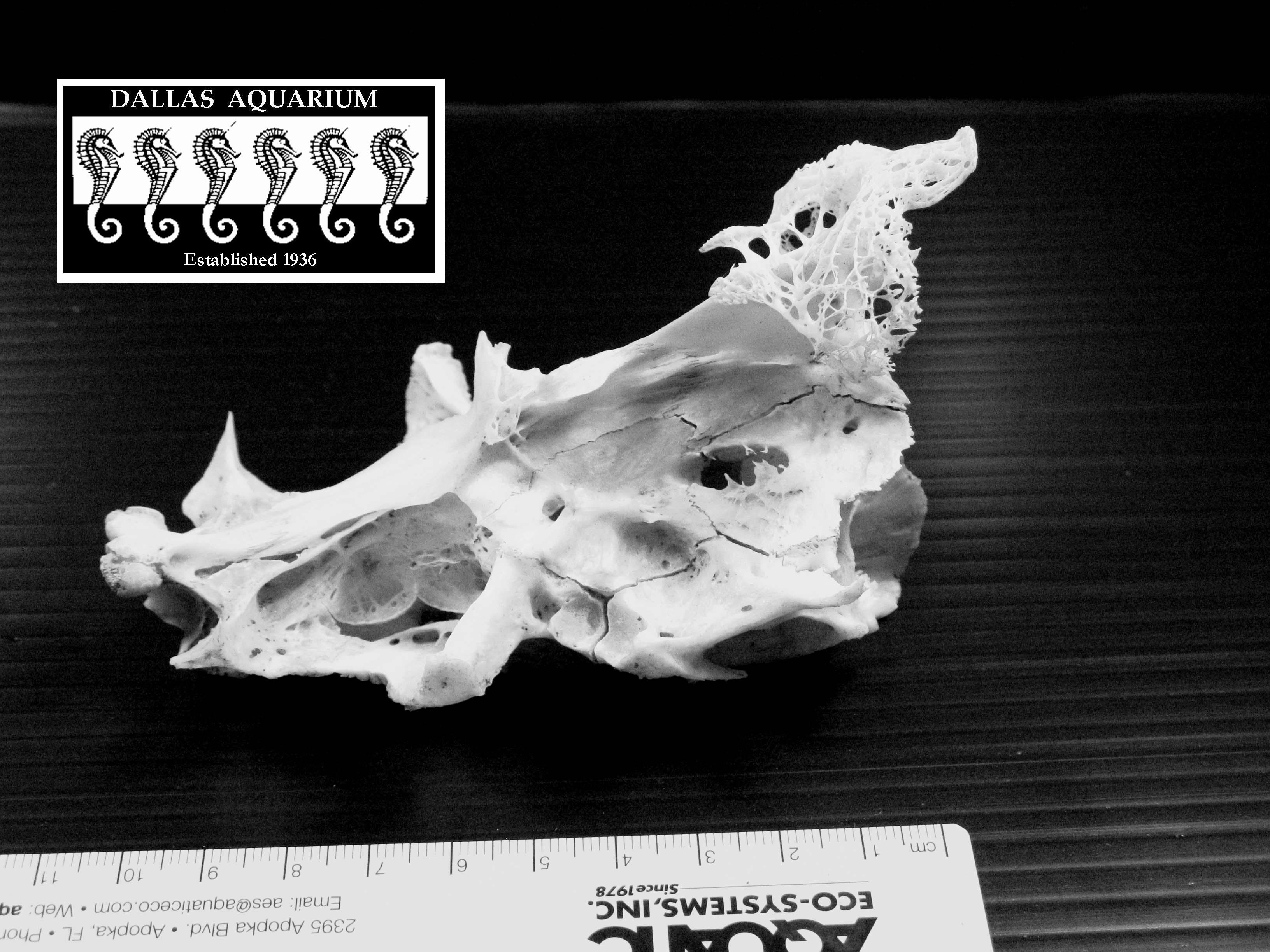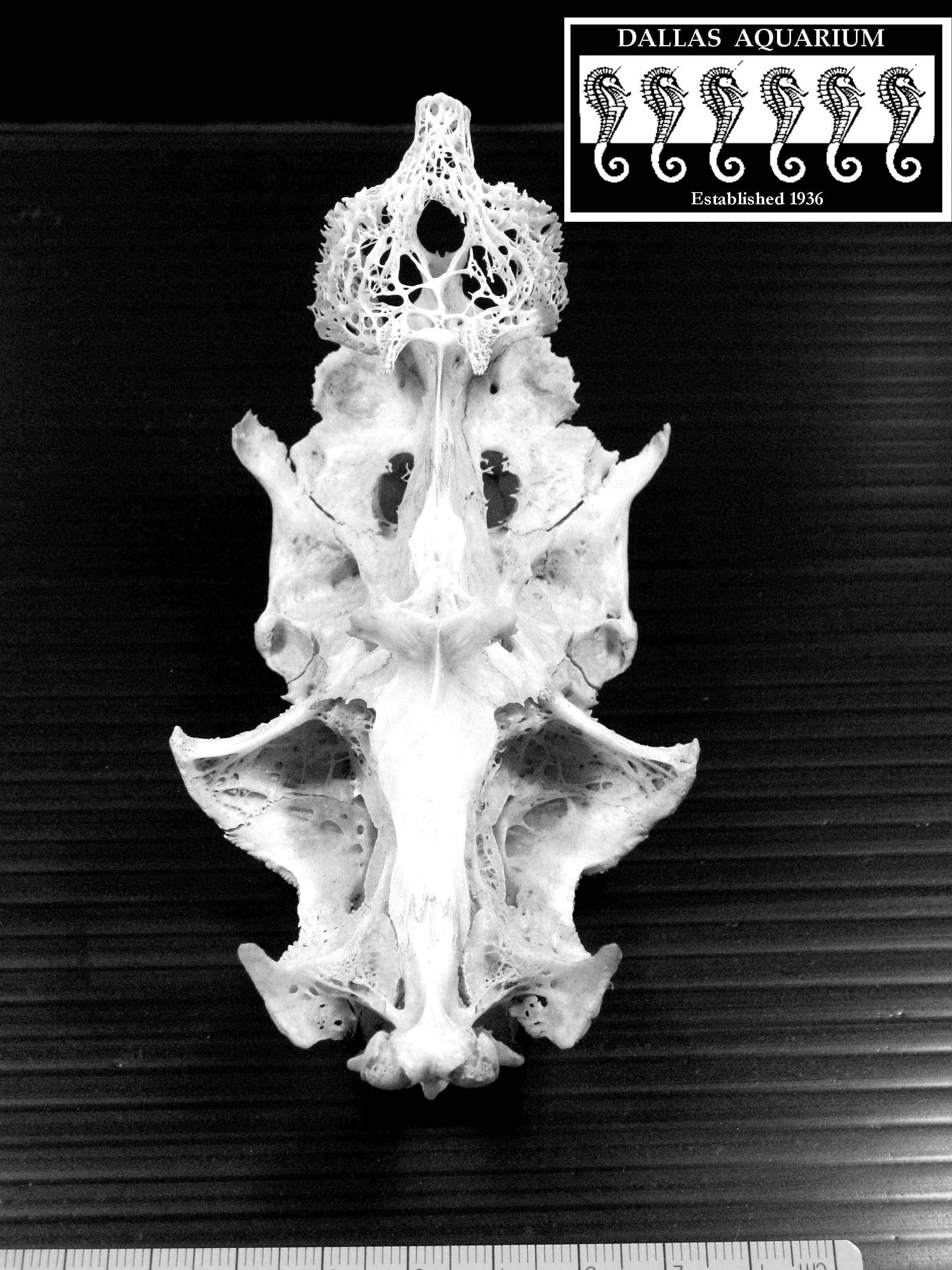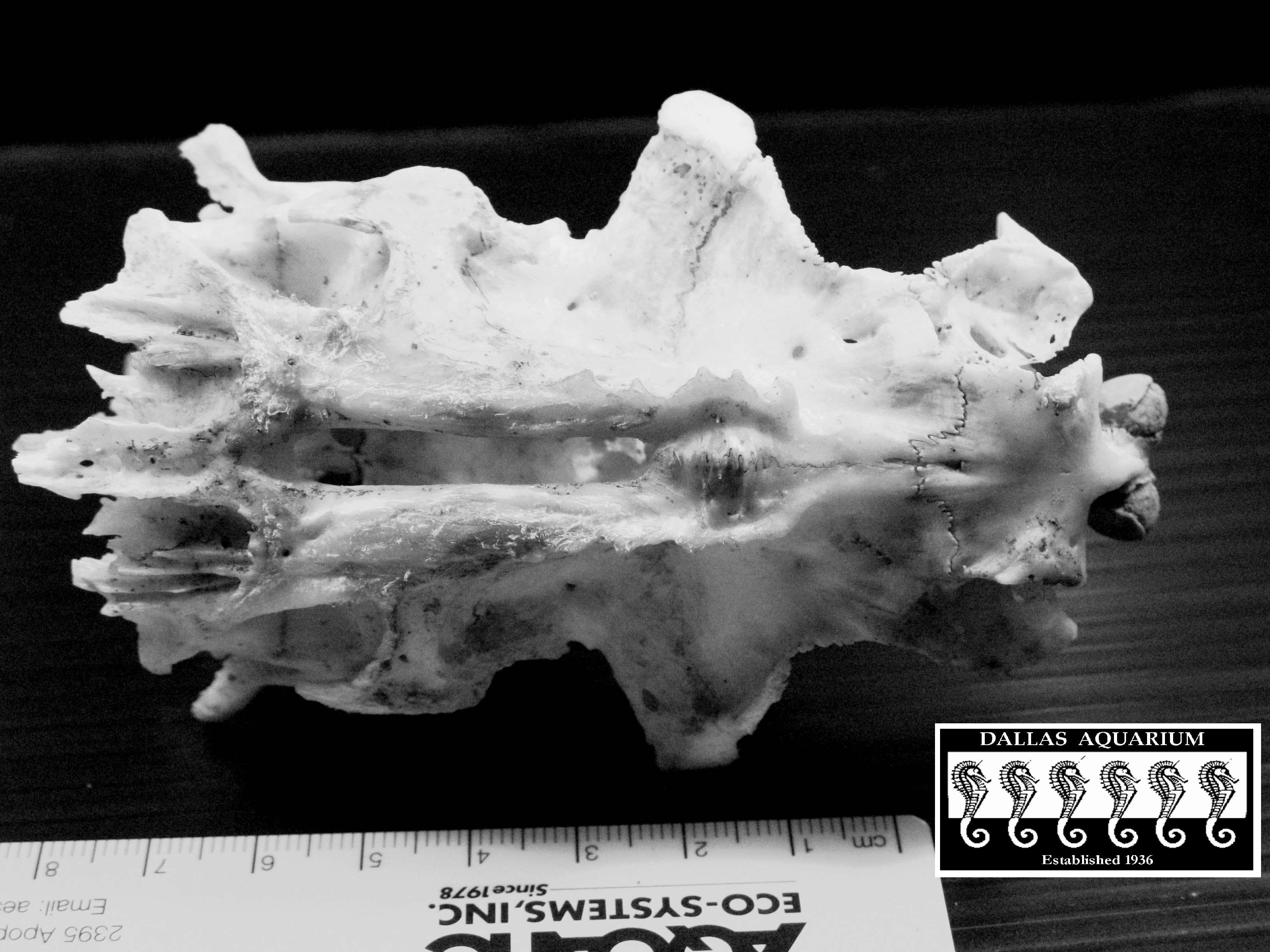Cna anyone help put a species (or even genus/family) with this partial skull? It was brought to our "Nature Exchange" at the Dallas Zoo (where kids can exchange specimens/artifacts/fossils/et cetera) and it has most of us stumped, especially in regards to the very delicate, almost lace-like process at the base of the skull (from the parasphenoid?)..unfortunately we do not have any info to accompany the artifact, though I would be willing to bet that it is from somewhere in the region- perhaps even coastal. Anyone seen this before? Any ideas?
Unknown Skull
Started by
Guest_BLChristie_*
, Aug 30 2009 02:30 PM
3 replies to this topic
#3
 Guest_BLChristie_*
Guest_BLChristie_*
Posted 06 September 2009 - 03:10 PM
Ok, I finally got an answer on this skull, I'll cut and past the email I recieved from our research tech who was looking into this mystery below:
From: Huntington, Robert
Sent: Friday, September 04, 2009 11:40 AM
To: Christie, Barrett
Subject: FW: NANFA forum - fish skull
________________________________________
From: Lee A. Fuiman
Sent: Thursday, September 03, 2009 9:49 AM
To: Huntington, Robert
Subject: RE: NANFA forum - fish skull
Bob,
The skull looked very familiar to me, but I could not place it. So, I sent it to Dr. Gerald R. Smith, Curator of Fishes and Curator of Vertebrate Paleontology at the University of Michigan, and a good friend of mine. Who better to identify fish bones than a fish paleontologist! Here is his reply:
Lee:
The fish is a Smallmouth Buffalo, Ictiobus bubalus. It was about 16 inches long (a relatively small, young one), native to Texas, and rather common in big rivers and reservoirs.
The lacy structure is the basioccipital process. It supports the palatal organ ( Joseph T. Eastman 1977, The Pharyngeal Bones and Teeth of Catostomid Fishes American Midland Naturalist, Vol. 97, No. 1. (Jan., 1977), pp. 68-88. ).
Thanks for sending the great photos.
jerry
I guess it was familiar to me because I worked on suckers (including buffalofishes) 25 years ago when I was at the University of Michigan. However, the larvae I worked on did not have a skull like this.
Mystery solved.
Cheers,
Lee
From: Huntington, Robert
Sent: Friday, September 04, 2009 11:40 AM
To: Christie, Barrett
Subject: FW: NANFA forum - fish skull
________________________________________
From: Lee A. Fuiman
Sent: Thursday, September 03, 2009 9:49 AM
To: Huntington, Robert
Subject: RE: NANFA forum - fish skull
Bob,
The skull looked very familiar to me, but I could not place it. So, I sent it to Dr. Gerald R. Smith, Curator of Fishes and Curator of Vertebrate Paleontology at the University of Michigan, and a good friend of mine. Who better to identify fish bones than a fish paleontologist! Here is his reply:
Lee:
The fish is a Smallmouth Buffalo, Ictiobus bubalus. It was about 16 inches long (a relatively small, young one), native to Texas, and rather common in big rivers and reservoirs.
The lacy structure is the basioccipital process. It supports the palatal organ ( Joseph T. Eastman 1977, The Pharyngeal Bones and Teeth of Catostomid Fishes American Midland Naturalist, Vol. 97, No. 1. (Jan., 1977), pp. 68-88. ).
Thanks for sending the great photos.
jerry
I guess it was familiar to me because I worked on suckers (including buffalofishes) 25 years ago when I was at the University of Michigan. However, the larvae I worked on did not have a skull like this.
Mystery solved.
Cheers,
Lee
#4
 Guest_Newt_*
Guest_Newt_*
Posted 06 September 2009 - 05:48 PM
Good to know! Too bad he didn't mention any diagnostic characteristics. It would be helpful to have a pictorial guide to fish skulls, at least of the larger species whose skulls we often come across. Next time I find a dried-up drum or a catfish head by the lake I'll clean it up and post some photos.
Reply to this topic
0 user(s) are reading this topic
0 members, 0 guests, 0 anonymous users











